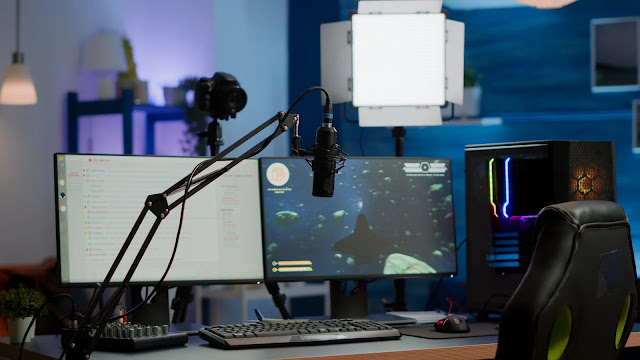Understanding OLED Technology
OLED, which stands for Organic Light-Emitting Diode, is a display technology that has gained significant popularity in recent years. It offers numerous advantages over other display technologies, making it a preferred choice in various applications.
What is OLED Technology?
Definition and Explanation of OLED
OLED is a type of display technology that consists of organic compounds that emit light when an electric current is applied. Unlike traditional LCD displays, OLED displays do not require a backlight as each pixel can emit light individually. This enables them to achieve deeper blacks, higher contrast ratios, and vibrant colors.
How OLED Works
In an OLED display, each pixel contains organic layers that emit different colors of light when stimulated. These layers are sandwiched between two electrodes, with one being transparent. When an electric current passes through the organic layers, the pixels emit light, creating the desired image. By controlling the intensity of the electric current, the brightness of each pixel can be adjusted, resulting in a wide range of colors and shades.
Advantages of OLED Technology
OLED technology offers several advantages that contribute to its growing popularity in the display industry.
High Contrast and Deep Blacks
One of the key advantages of OLED displays is their ability to achieve high contrast ratios and deep blacks. Since OLED pixels can individually emit light or be turned off completely, they can achieve true blacks by simply not emitting any light. This results in enhanced contrast and more realistic images with richer details.
Wide Color Gamut
OLED displays can reproduce a wide color gamut, providing vibrant and accurate colors. The organic compounds used in OLED technology can emit light at different wavelengths, enabling a broader range of colors to be displayed. This leads to more vivid and lifelike images, making OLED ideal for applications where color accuracy is crucial.
Flexible and Thin Design
OLED technology allows for flexible and thin displays. The organic layers in OLED panels can be deposited on flexible substrates, enabling the creation of curved or rollable displays. This flexibility opens up new possibilities for innovative product designs, such as curved TVs and flexible smartphones.
Fast Response Time and Refresh Rate
OLED displays have fast response times, which means they can quickly transition between different colors and display content with minimal motion blur. This makes OLED displays well-suited for applications that involve fast-moving visuals, such as gaming or sports broadcasts. Additionally, OLED displays can achieve high refresh rates, resulting in smoother and more fluid animations.
Applications of OLED Technology
OLED technology has found applications in various industries, revolutionizing the way we experience displays.
OLED in Televisions and Displays
OLED displays have made a significant impact in the television market. With their ability to deliver exceptional image quality, OLED TVs offer immersive viewing experiences with vibrant colors, deep blacks, and wide viewing angles. OLED technology is also utilized in high-end monitors and professional displays where color accuracy is paramount.
OLED in Smartphones and Mobile Devices
OLED displays have become increasingly prevalent in smartphones and mobile devices. Their ability to offer slim profiles, vibrant colors, and energy-efficient performance make them highly desirable for mobile applications. OLED displays provide vivid visuals, enhance the viewing experience, and contribute to extended battery life.
OLED in Automotive Displays
The automotive industry has embraced OLED technology for display applications in vehicles. OLED displays are used in instrument clusters, infotainment systems, and heads-up displays (HUDs). The self-emissive nature of OLED enables high visibility, excellent contrast, and customization options, enhancing the user experience and safety on the road.
OLED in Lighting
OLED technology is also being used in lighting applications. OLED panels can emit soft, diffused light, making them suitable for creating ambient lighting in various settings. OLED lighting offers a unique design element with its thin and flexible form factor. It can be used in architectural lighting, decorative fixtures, and even in personalized lighting solutions. The ability to create large, uniform light-emitting surfaces allows for innovative and visually appealing lighting designs.
Comparison with Other Display Technologies
When considering display technologies, it's essential to understand how OLED compares to other commonly used options.
OLED vs LCD
Compared to LCD (Liquid Crystal Display) technology, OLED offers several advantages. OLED displays have better contrast ratios and deeper blacks since each pixel emits its own light. LCDs require a separate backlight, which can lead to less precise control over black levels. OLED also provides wider viewing angles, as it doesn't suffer from color shifting or contrast loss at extreme viewing angles like LCD does. However, LCDs generally have higher brightness capabilities and can be more cost-effective for certain applications.
OLED vs QLED
QLED (Quantum Dot LED) is a display technology that utilizes quantum dots to enhance color reproduction. While QLED can achieve high brightness levels and wide color gamut, OLED displays still have an advantage in terms of contrast ratio and deep blacks. Additionally, OLED displays have faster response times and better viewing angles compared to QLED. However, QLED technology can offer brighter highlights and may be more affordable in larger screen sizes.
OLED vs LED
LED (Light-Emitting Diode) displays are commonly used in various applications. It's important to note that OLED is a type of LED display. However, when referring to LED displays, it usually means LCD panels with LED backlights. Compared to traditional LED-backlit LCDs, OLED displays have better contrast, deeper blacks, and wider viewing angles. LED-backlit LCDs, on the other hand, can provide higher brightness levels and are more cost-effective for certain applications where deep blacks are not critical.
Challenges and Limitations of OLED Technology
While OLED technology offers numerous benefits, there are also challenges and limitations that need to be considered.
Screen Burn-in
One of the concerns with OLED displays is the possibility of screen burn-in. This occurs when static images are displayed for extended periods, causing certain pixels to degrade and retain a faint image. Manufacturers have implemented various techniques to mitigate this issue, such as pixel shifting and brightness leveling algorithms. With proper usage and preventive measures, the risk of screen burn-in can be minimized.
Lifespan and Degradation
OLED displays can experience gradual degradation over time, particularly the organic materials used in their construction. This can lead to a decrease in brightness and color accuracy. However, manufacturers have made significant advancements in improving OLED lifespan and implementing technologies to slow down degradation. It's worth noting that modern OLED displays have lifespans that can meet or exceed the average consumer usage period.
Production Costs
OLED displays can be more expensive to produce compared to LCDs, primarily due to the complexity of the manufacturing process and the higher costs associated with organic materials. However, as OLED technology continues to evolve and production volumes increase, the costs are expected to decrease, making OLED more accessible for a wider range of applications.
Future Developments and Innovations in OLED
OLED technology continues to evolve, and ongoing research and development are driving advancements in various areas.
Advancements in OLED Manufacturing
Manufacturers are investing in improving the efficiency and scalability of OLED manufacturing processes. This includes advancements in deposition techniques, material utilization, and yield optimization. These developments aim to increase production capacity,reduce costs, and further enhance the quality and performance of OLED displays.
Improved Efficiency and Power Consumption
Efficiency improvements are a key focus in OLED research. By enhancing the efficiency of organic materials and optimizing the driving electronics, OLED displays can achieve higher luminous efficiency and reduce power consumption. This is crucial for extending battery life in portable devices and improving energy efficiency in general.
New Applications and Form Factors
The versatility of OLED technology allows for new applications and form factors to emerge. Foldable OLED displays have already entered the market, offering a blend of portability and larger screen real estate. Transparent OLED displays are being explored for use in augmented reality (AR) and heads-up display (HUD) applications. As research progresses, OLED may find applications in areas such as wearables, smart home devices, and more.
Conclusion
OLED technology has revolutionized the display industry, offering numerous advantages over traditional display technologies. With its ability to deliver high contrast, deep blacks, wide color gamut, and flexible design, OLED has found applications in televisions, smartphones, automotive displays, and lighting solutions. While challenges such as screen burn-in, lifespan, and production costs exist, ongoing advancements in manufacturing, efficiency, and research continue to address these limitations. Embracing the versatility and superiority of OLED technology opens up possibilities for innovative and immersive display solutions in various industries, paving the way for a visually captivating future.




Comments
Post a Comment